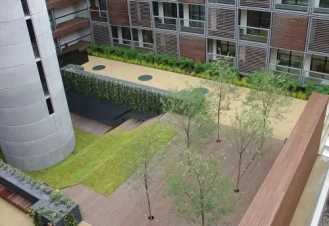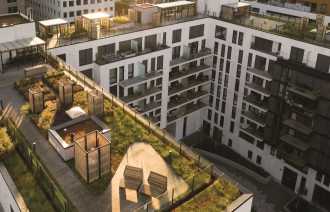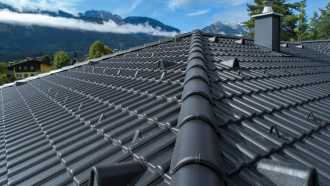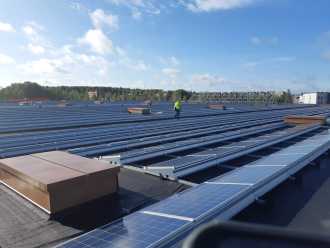Our country pages
Africa
Europe
Search
The benefits of green roofing
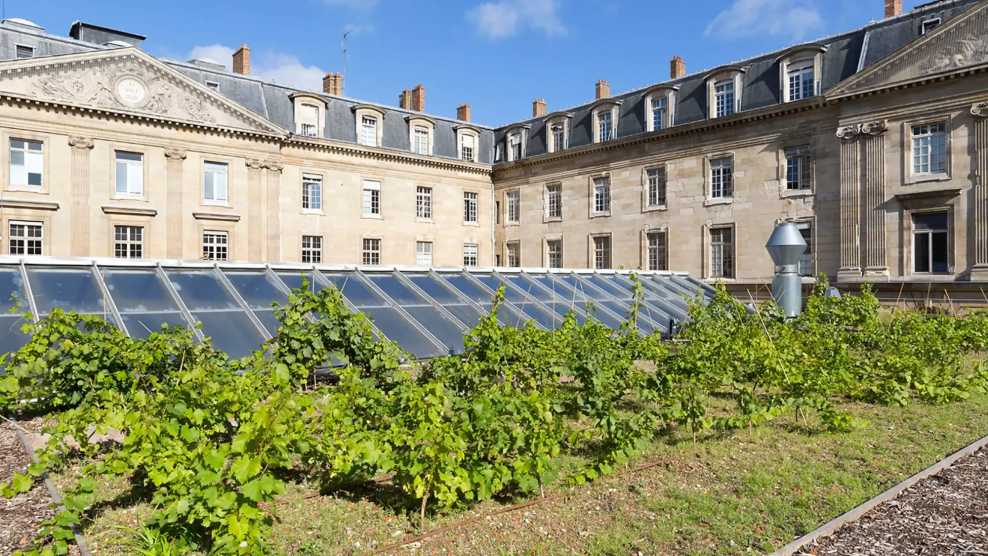
What are green roofs?
If you have a roof you almost certainly have an opportunity to improve the physical environment around you, as well as benefiting in various social, wellbeing and financial ways. Today, a roof is much more than simply a protective covering over your head. Your options of how you use and maximize your roof are varied, but fundamentally come down to creating either a blue roof or green roof (also known as eco, vegetated and living roofs).
With a green roof, you can create a pretty garden, a vegetable patch, a communal gathering area, and a way to improve the physical world around you. A green roof is simply a planted area on a flat or pitched roof. Depending on the type of green roof, you can grow everything from low grasses, vegetables and herbs, to plants, bushes and trees. You can also use the space recreationally, according to its size and accessibility.
Green roofs date back thousands of years, such as sod roofs in northern Scandinavia, and the most famous ancient green roofs, the Hanging Gardens of Babylon. Constructed around 500 B.C in modern day Iraq and built over arched stone beams, the hanging gardens were cleverly waterproofed by layering reeds and thick tar.
The modern trend in green roofs was developed in Germany in the 1960s, and it is estimated that about 10% of all German roofs have now been "greened", while the annual growth in green roofs in the UK is around 15%. Because of their many benefits, a number of European countries have very active associations promoting green roofs, including Germany, Switzerland, the Netherlands, Norway, Italy, Austria, Hungary, Sweden and Greece.
Jump to section
The benefits of green roofs in urban areas
It is human instinct to connect with nature and other living beings. But how do we do this when, with the rapid rise of urbanisation (it is estimated that 70% of the world’s population will live in an urban area by 2050), many of us are cut off from the simplest of natural life forms? It is easier than you think - install a green roof.
So, what are the benefits of having a green roof in urban areas? Well, the list is rather impressive. The environmental benefits of a living green roof include
Contributing towards energy efficiency: since roofs account for 20–25% of all urban surface areas, a green roof can sustainably decrease energy consumption;
Increased energy efficiency: green roofs can help to insulate buildings, reducing the amount of energy needed to heat and cool them. And since the rooftop becomes cooler, the building’s AC units are more efficient;
Improving the microclimate: as rain water evaporates on green roofs, it humidifies the air above it, making the air cooler. This reduces the ambient temperature of the air above rooftops, improving the microclimate around it;
Improved air quality: green roofs help to reduce the amount of air pollution by absorbing pollutants and releasing oxygen through photosynthesis;
Reduced urban heat island effect: green roofs help to cool the surrounding air by providing shade and absorbing less heat than traditional roofing materials;
Increased stormwater management: green roofs can retain and filter rainwater, reducing the amount of stormwater runoff and helping to prevent flooding;
Improved biodiversity: green roofs provide a new habitat for a wide range of plants and small creatures, promoting biodiversity in urban areas;
Urban agriculture: green roofs can reduce an individual or community’s urban footprint thanks to local food system creation, promoting self-reliance on food resources.
Examples of green roofs
Environmental, health, social and cost benefits of green roofs
There are also proven mental wellbeing and social benefits to green roofs:
Natural look: green roofs are aesthetically pleasing, as well as practical. There is a softening of traditionally hard architectural lines and materials with the introduction of living elements. Some studies show green areas have a relaxing psychological effect, help reduce blood pressure and lower the heartbeat
Usable green space: green roofs provide green space in urban areas with limited open space, and accessible roofs can be designed as community gardens
Noise reduction: a green roof system provides good sound insulation, keeps the living space quieter and contributes to noise reduction in large cities, near industrial areas and airports.
Always important to consider, there are economic benefits of green roofs, in the short-, medium- and long-term:
Extended roof life: green roofs have been shown to have a life expectancy of around 50 years The underlying roof materials are protected from mechanical damage, ultraviolet radiation and extreme temperatures, which results in reduced maintenance and renovation costs
Energy efficient: green roofs help to reduce energy consumption by 40% for heating in winter and by 100% for cooling in summer
Due to all the environmental, health, social and cost benefits of green roofs, they substantially enhance the value of both residential and commercial properties.
Choosing extensive or intensive green roofs
Depending on the purpose of your green roof, it can be designed as an extensive green roof, semi-intensive green roof or intensive green roof:
Extensive green roofs are low-cost and shallow. They generally consist of small plants like sedum and short grasses, can be installed quickly, and require little maintenance ongoing;
Extensive green roofs are generally built solely for their environmental considerations. They are purely decorative, not usable and comprised of soft layers of soil, with just a few plant species to limit the maintenance;
Semi-intensive green roofs are deeper than extensive ones, though they still tend to be fairly shallow. They’ll usually include small shrubs and plants, and may be installed to increase biodiversity or as a shared garden;
Intensive green roofs tend to be very deep and may include an extremely broad variety of plants and features, including lawns, trees, walkways, pathways, boulders, and with areas that are terraced or angled. They are intended to be park-like spaces for residents to share.
Benefits of green roofs in flat and pitched roofs
Green roofs are usually flat roofs, but there is nothing stopping you creating an equally effective green roof on your pitch roof, whether you have a commercial or domestic building.
FAQ about Green Roofing
What is a green roof?
A green roof is a flat or sloping roof covered with vegetation. When building a green roof, it’s important to think about its composition, which must be made up of layers of different but interacting materials to ensure
water accumulation
water tightness
protection against root action
mechanical protection
draining and filtering activity
nutrients get to the plants.
Are green roofs eco-friendly?
Green roofing has a lot of benefits when it comes to dealing with sustainability, the environment and climate change concerns, particularly smog and pollution. These benefits include
encouraging wildlife: rooftop habitats can provide a 'green link' that connects natural pockets of habitat to each other. They can also provide isolated habitats that are not disturbed by other green areas at ground level
improving air quality: green roof plants improve air quality by absorbing atmospheric carbon dioxide and releasing oxygen.
improving temperature regulation: through the daily cycles of condensation and evaporation, plants are able to cool and humidify the surrounding air, improving the microclimate
reducing and slowing stormwater runoff: in urban areas in certain climates, green roofs can retain nearly all storm-related water during the summer months, and up to 20% during the winter months.
What are the best plants to use on a green roof?
It is often best to plant species on a green roof that require minimal maintenance. Vegetation composed of sedum essences can survive extreme drought and easily regenerate and self-propagate.
Green roof design can also include Blue Green Roof technology, which offers all the performance features typical of green roofs while offering the possibility of storing, conserving and reusing rainwater. It is also a useful solution for reducing the effects of extreme rainfall that can cause localised damage.
What is the most eco-friendly roofing material?
When it comes to choosing roofing materials, strong, durable and - more recently - eco-friendly characteristics are most often selected. These traits are available in both materials and solutions. For example:
wooden shingles: these are shingles made from shredded wood from controlled forests
slate and clay roof tiles: terracotta roof tiles are made from porous ceramic with clay as its base. Clay is a natural material and has been used in the building process for centuries due to its durability and low maintenance
solutions with unique characteristics: such as Noxite bituminous waterproofing membranes, which not only provide a high-quality flat roof, but reduce pollution by using the sun to transform harmful nitrogen oxides (NOx) into harmless nitrates, which are washed away by the rain. Noxite is a highly effective means of reducing the ongoing environmental impact of a building as it continues to function throughout the life of the roofing membrane
green roofs: the green roof solution reduces the heat island effect, boosts the insulation capacity of the environment below and improves air quality
cool and white roofs: these reduce roof radiation by reducing overheating and so the air conditioning required.
Are green roofs expensive?
The price of a green roof depends on the size of the roof, the steepness or pitch, the type of green solution chosen and the vegetation planted. When considering the cost, remember to take into account the benefits of green roofs as a source of clean air, emotional wellbeing and environmental diversity.
If you’re investing in a green roof, it’s important to know exactly what the benefits are so that you get a great return on investment:
roof membrane protection: vegetation on a roof deck protects the roof surface from the extremes of weather, temperature and UV radiation, which can significantly increase its lifespan
reduced storm water run-off: water is stored by the green roof substrate and then taken up by the plants, where it is returned through transpiration and evaporation into the atmosphere. The drainage layer in green roofs also delays the rate at which water run-off occurs, reducing stress on drains and sewers during heavy rainfall
reduced energy costs: the layers of a green roof system improve the thermal performance of the roof, helping to keep the rooms below cool in summer and warm in winter (although this effect is generally not included in any U-Value calculations).
How long do green roofs last?
Green roofs can extend the life cycle of a roof for more than 30 years as its layering makes it more durable than normal roofs. It is important, though, that the membrane and the stratigraphy (or layers) are correctly installed.
How long does a flat roof last?
A flat roof usually has an average lifespan of about 15 years. Many of its components require maintenance from time to time and, if this is not done, the roof can be damaged by infiltration. To make the roof last as long as possible, it is important to carry out frequent inspections and work on the drainage system.
How frequently should roof maintenance be performed? And what does this involve?
The health of the roof changes over time depending on the attention you give it. To ensure high quality roof products remain fully functional over decades, it is essential to follow a regular maintenance programme.
Maintenance problems normally include infiltration, cracks in the roof covering or tiles, deterioration of the membranes and insulation. If not repaired, the roof's insulating performance will decline.
Inspect your roof after storms and high winds, and at major discontinuity points, and clean it periodically.
And remember to check your product’s warranty, whether you have installed just a few tiles or an entire roof system. A good warranty can protect you from costly repairs in the future.
How do you install a green roof?
A green roof is a surface that needs to be made waterproof to avoid damage from water seeping in. So, it is essential to have an anti-root membrane and a draining layer that will help carry away excess water from the rain or gutters.
Then, adding a drainage mat and felt layer will allow the water to pass through and the roots to attach themselves to the growing medium. The drainage layer will then provide the growing platform for the green roof. The composition of the soil is also important as it aids proper plant nutrition and growth.
Finally, the roof must include an irrigation system, possibly water-based, so as not to overload the roof, and reduce water consumption and waste.
If you choose an intensive green roof, you can plant classic garden plants, both herbaceous and shrubs. If you opt for an extensive green roof, low-lying and creeping plants are best as they are suitable for growing in thin layers of substrate.
What is a blue roof and why is it considered environmentally friendly?
A blue roof can be key to sustainability in buildings, particularly in urban areas where a ground level solution may not be possible due to lack of space. Benefits of a blue roof include
temporarily store rainfall to reduce runoff
reduce the flow rate of water from the roof
store water for reuse in other areas of the building, such as irrigation or cooling
make up the drainage and support layers for green roofs
Easy to maintain.
If your business is located in an area particularly prone to flooding, then a blue roof system can also help to protect your building (and neighbouring ones) from damage.
Our point of view
Select a category
Contact Us
Contact our local team
We can support you to define solutions and services for specific country.
Media Contact
Contact us for more information on BMI Group
group.communications@bmigroup.com
